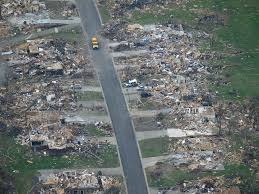
Introduction
The Joplin tornado that struck on May 22, 2011, remains one of the deadliest and most destructive tornadoes in U.S. history. With winds exceeding 200 miles per hour, the tornado devastated the city of Joplin, Missouri, leaving behind a trail of destruction in its wake. This event serves as a critical reminder of the power of natural disasters and underscores the importance of preparedness and community resilience.
The Tornado’s Impact
The tornado carved a path approximately 6 miles long and 1 mile wide, affecting more than 8,000 buildings, including homes, schools, and hospitals. Tragically, the disaster claimed the lives of 158 people and injured over 1,000 others. The damage was estimated to exceed $2.8 billion, making it one of the costliest tornadoes on record. Numerous communities were left reeling from the aftermath, with many residents left without shelter or basic necessities.
Response and Recovery Efforts
In the wake of the disaster, local, state, and federal agencies came together to provide assistance and support to the affected residents. The Federal Emergency Management Agency (FEMA) implemented disaster relief programs, and various non-profit organizations mobilized to offer aid, collect donations, and help with rebuilding efforts. The recovery process has been a long and arduous road for the city and its residents. Over the years, Joplin has made significant strides in rebuilding, with new homes, schools, and infrastructure rising from the rubble.
Lessons Learned
The Joplin tornado has provided valuable lessons in disaster preparedness and response. It highlighted the need for well-coordinated emergency plans, effective communication strategies, and community support systems. Many cities in tornado-prone areas have since updated their warning systems and emergency protocols based on the experiences learned from Joplin. Additionally, the event spurred discussions about building codes, disaster resilience, and the importance of community awareness in mitigating the effects of such disasters.
Conclusion
As Joplin continues to rebuild and recover, the memories of the 2011 tornado serve as both a testament to the city’s resilience and a reminder of the importance of preparation in the face of natural disasters. It is crucial for communities worldwide to take heed of these lessons to ensure safety and minimize loss in future events. The Joplin tornado will always remain etched in the collective memory as a poignant example of both devastation and the human spirit’s ability to recover.



